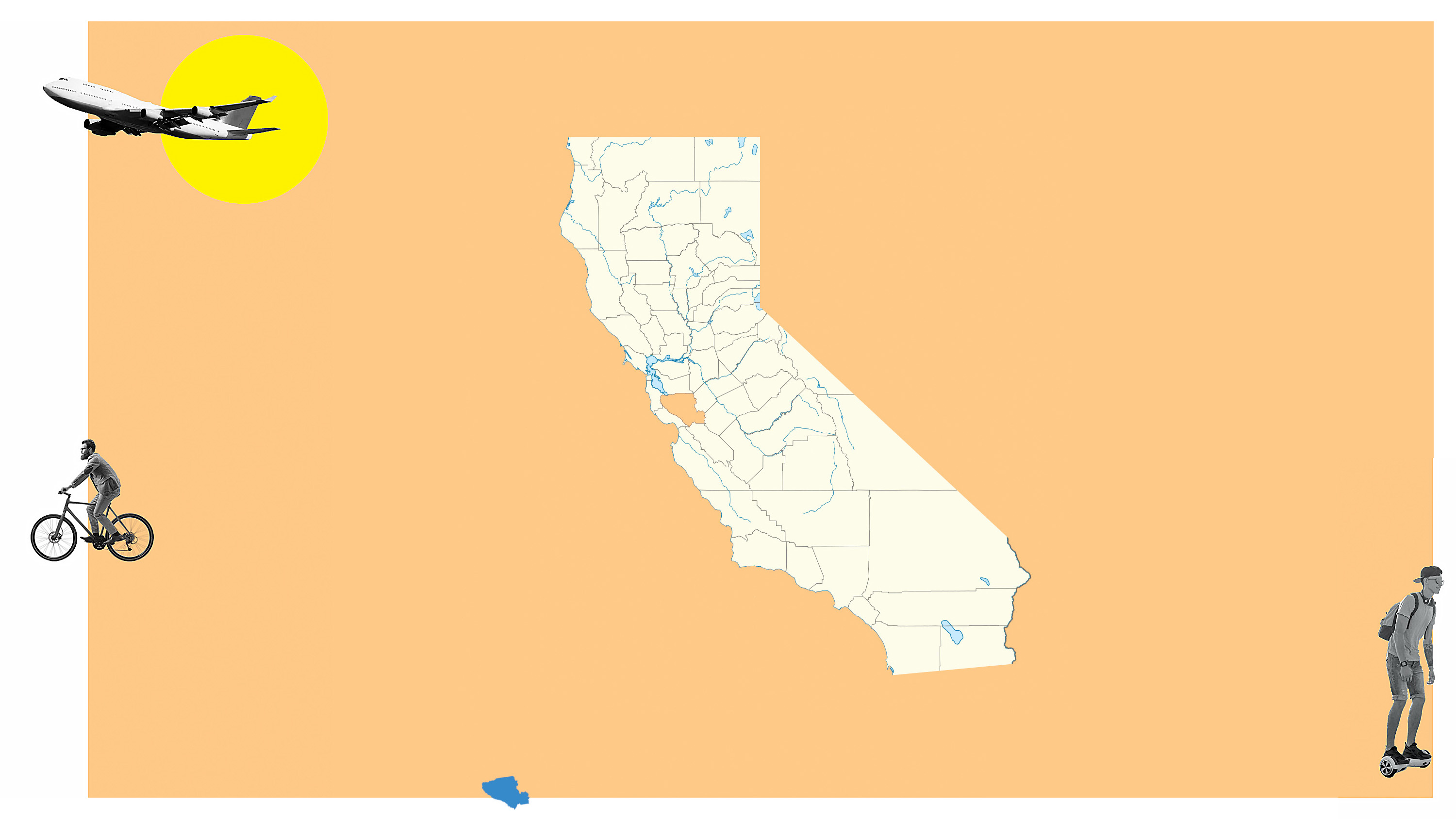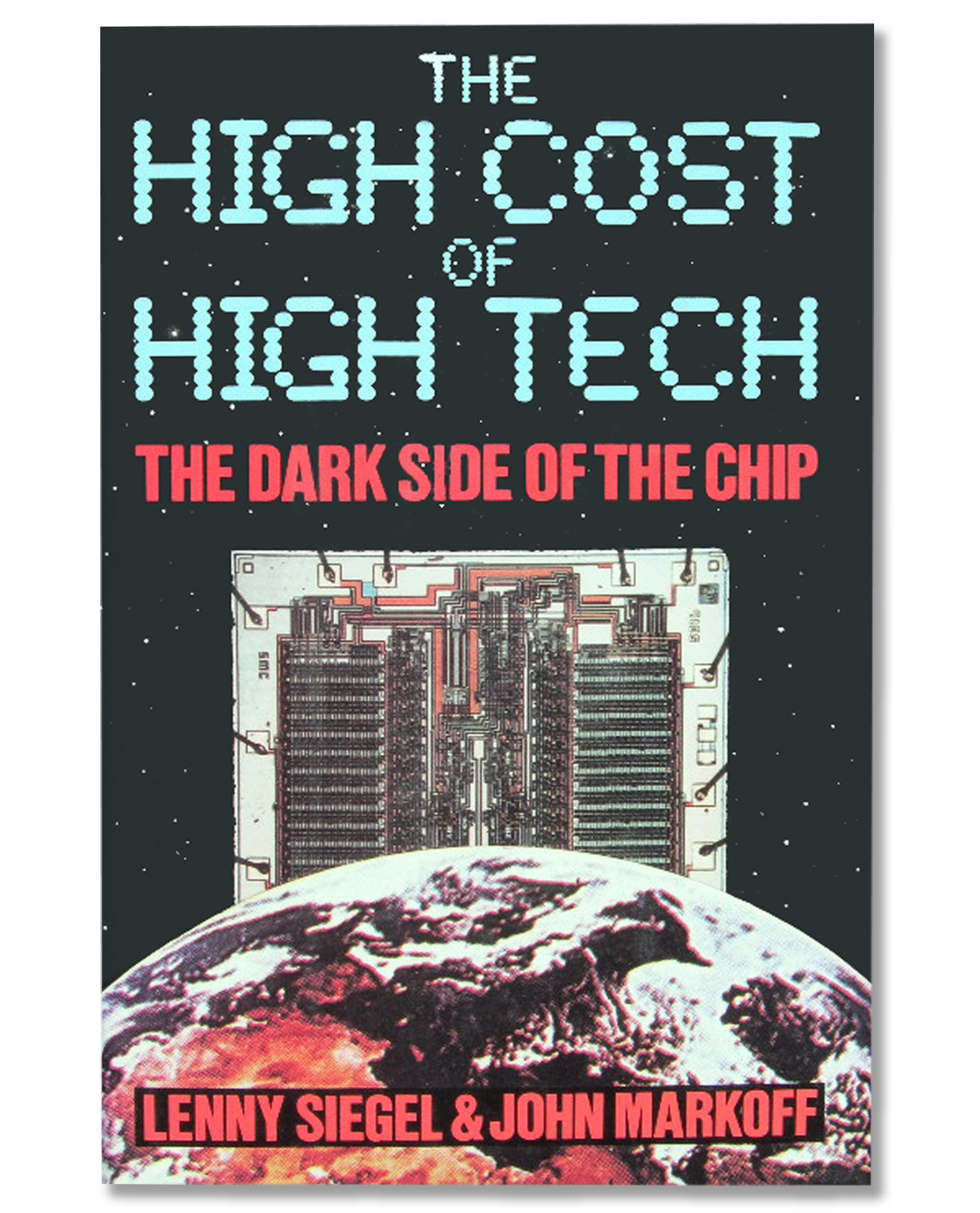Why it’s a mistake to bet against Silicon Valley
The latest wave of tech companies quitting California may have mistaken what makes it a center of innovation: its ability to capitalize on its luck.

“Will the last person leaving SEATTLE—Turn out the lights.”
It’s been half a century since, in the midst of a severe 1970s downturn plaguing aircraft maker Boeing, this billboard greeted travelers on their way to Sea-Tac airport.
But Seattle, in the end, did not go the way of Detroit. Before the end of the decade two of the city’s native sons, Bill Gates and Paul Allen, renamed their software company from its original Micro-Soft, moved back home from New Mexico, and set up in a suburb across Lake Washington.
How would the city have fared if Gates and Allen had instead decided to build Microsoft in Albuquerque? We’ll never know. But Seattle’s recovery was more reliant on luck than people are usually willing to admit.
We like to come up with reasons that explain why significant changes happen, or how great shifts occur: we hear grand claims of innovative culture or geographic advantages. But the reality is that serendipity played a huge role in remaking the Seattle region’s economic fortunes. The histories of such places are driven as much by random personal decisions about things like where to live, or by “black swan” events like the 2008 financial crash, as they are by destiny. And while these may offer less satisfying ways to predict the future—they are certainly more a patchwork quilt of reasons than professional futurists would have you believe—they are accurate about not just Seattle, but Silicon Valley too.
There has always been an immense amount of debate over what accounts for the uniqueness of Silicon Valley—which, coincidentally, was given that name by technology journalist Don Hoefler in 1971, the same year the “Turn out the lights” billboard appeared in Seattle.
Whatever the reasons the Valley has remained the world’s dominant technology innovation center since then, its roots clearly lie in a serendipitous set of events. First, William Shockley decided to leave Bell Labs and start his new semiconductor company in Palo Alto because he wanted to be close to his aging mother. Then, a couple of years later, a Justice Department antitrust lawsuit against American Telephone & Telegraph led to mandatory free licensing of the company’s integrated-circuit technology. This sparked the explosion in transistors and computers, and wave after wave of change.

But despite its near-religious belief in its own reputation for innovation, the Valley has been sustained by relatively few huge, dramatic concepts that have spawned whole new ways of living and working, like Doug Engelbart’s hypertext and mouse, Alan Kay’s Dynabook (a precursor to the laptop), or Marc Weiser’s ubiquitous computing. Instead, Silicon Valley has thrived at product engineering and become adept at something else: spotting a profitable new idea.
“Whenever there is a new idea, the Valley swarms it,” Jensen Huang, the chief executive of the chipmaker Nvidia, told me. “You have to wait for a good idea, and good ideas don’t happen every day.”
That focus has been multiplied by the strength of the Valley’s venture capital industry, and its efficiency in funding new startups. In 2019 the Bay Area’s $50 billion plus in venture funding far exceeded the total in any other region of the United States.
All this underlies a transformation that has led the region to move away from manufacturing to hardware engineering and software design. (Nvidia itself was founded to design graphics processors for video games, and then turned decisively toward machine-learning applications.)
But good ideas are not just rare—they are also notoriously hard to predict. The web, search engines, and machine learning all took Silicon Valley’s gurus by surprise.
To a large degree this was because for decades, the rapidly accelerating power and falling cost of computing made new, unexpected things possible. With each new generation of silicon, innovations emerged like clockwork: desktop personal computers, laptops, digital audio and video, smartphones, and the internet of things.
Surprises may be harder to come by now that Moore’s Law, the Valley’s principal article of faith, has been sputtering since 2013. In fact, in at least one significant way, it has come to a complete standstill. The cost per transistor—which once fell at the same exponential rate that transistor density increased—hasn’t budged for more than three generations of chipmaking.
“We’ve basically had a free ride,” Carver Mead, the physicist who actually coined the term “Moore’s Law,” told me several years ago. “It’s really nuts, but that’s what paid off.”
Now, however, the free ride is over. Significant technology advances will come only in response to human ingenuity. And that means it’s time for Silicon Valley to put up or shut up.
Serendipity is particularly worth keeping in mind as high-profile companies head for the exits. Just last December, Hewlett Packard Enterprise and Oracle announced they were relocating their headquarters to Texas, and Tesla gave signs it may follow suit. Their moves have touched off a new round of hand-wringing and speculation over whether the Valley has lost its mojo.
But this is not the first time the question has been posed. There were times in the past when progress appeared to be lagging, only for it to roar back with some breakthrough that seemed to come entirely out of left field.
By 2006, for example, it felt as though innovation was ebbing in the Valley and mobile hardware advances were happening first in Europe, at companies like Nokia and Psion. But the following year Steve Jobs introduced the iPhone, reimagining Apple’s two biggest failures: the Newton personal digital assistant and the General Magic personal communicator. The Valley reemerged almost overnight as the world’s dominant region for innovation in information technology.
Northern California has been a boom-and-bust economy as far back as the Gold Rush. As a teenager growing up in Palo Alto, I heard of mass layoffs at the NASA Ames research laboratory and the Lockheed Missiles and Space Company that led waves of engineers to leave town.
I was reminded of this after the dot-com collapse, when I saw a startup veteran at a conference and realized I hadn’t seen him for a number of years.
“Where have you been?” I asked. He had left the state to live with his family, but things were picking up and now he was back, he replied.
This is not to say the Valley’s survival is a given. Today, despite continuing strong investment and venture capital, there are fresh reasons for uncertainty besides the stalling of the semiconductor cycle.
One has to do with the ability to import talent. Silicon Valley, in many ways, owes its very existence to the mystique that first emerged in the 1970s, creating a magnetic force that has continuously pulled the best and the brightest from all over the world. Indeed, that may be a key to understanding what sets the region apart from other innovation centers.
I first stumbled across this as a technical editor at Byte magazine in the mid-1980s. A local hardware designer took me to an Indian bakery in Sunnyvale, full of women in saris and their husbands, who were employed as engineers. They had come to the Valley as a key intellectual labor force for the rapidly growing disk drive industry. (Ten megabytes of hard disk storage was a big deal!) Europeans, Asians, and Latin Americans came too, bringing intellectual power and entrepreneurial spirit. Within a decade it was possible to drive around the Valley from neighborhood to neighborhood and see a different language on the shop signs and billboards in each one.
Now, however, there are powerful anti-immigration forces at work in the United States, and it is quite possible—even under a Biden administration—that new barriers to foreign technical workers and entrepreneurs may kill one of the key ingredients of the Valley’s success.
Another reason for uncertainty is that the next major technology shift is not yet clear. When the pace of Moore’s Law slowed during the past decade, the Valley made a transition between the two most recent generations of innovation—from social media platforms to machine-learning-based software and services. Venture capital pivoted, and funding for social media, which had peaked in 2012, fell to almost zero by 2016, as investors rushed into machine-learning startups.
There is little consensus today, however, about what the “next big thing” might be or when it might arrive. The futurists point to augmented reality—some optimists believe the entire Asian flat-panel-display industry is at risk—as a likely candidate for the platform that will touch off the next investment cycle. Or perhaps software and biology will finally merge: synthetic biology has been given a significant boost by the success of the recent mRNA covid vaccines, after all. Or maybe quantum computing will become a commercial reality, drastically reducing the cost of Google’s data centers. Or consider what it would mean if an Apple car proves to be as successful as the iPhone. (But I wouldn’t count on it.)
It still seems unwise to bet against serendipity, or against Silicon Valley. Predictions of its imminent demise have been regular and shortsighted.
It is just as likely, however, that there will be a long dry spell and the Valley will find itself in a predicament similar to that faced by Seattle when it overrelied on Boeing. Even more worrisome is that China may prove to be the fierce competitor Silicon Valley once feared Japan would be.
It is certainly possible that the real threat to the next technology platform will emerge first from Shanghai, or Shenzhen, or Beijing. Anyone who has visited the Chinese capital’s Zhongguancun district cannot help but recognize its similarity to the Valley in its concentration of talent and capital.
That being said, it still seems unwise to bet against serendipity, or against Silicon Valley. Predictions of its imminent demise have been regular and shortsighted.
I learned this lesson personally after I helped write The High Cost of High Tech, a 1985 book arguing that the environmental and labor costs of growth would soon limit the expansion of Silicon Valley. My coauthor was Lenny Siegel, who went on to become the mayor of Mountain View, the city where Google is now headquartered.
Oops.
Keep Reading
Most Popular
Large language models can do jaw-dropping things. But nobody knows exactly why.
And that's a problem. Figuring it out is one of the biggest scientific puzzles of our time and a crucial step towards controlling more powerful future models.
The problem with plug-in hybrids? Their drivers.
Plug-in hybrids are often sold as a transition to EVs, but new data from Europe shows we’re still underestimating the emissions they produce.
Google DeepMind’s new generative model makes Super Mario–like games from scratch
Genie learns how to control games by watching hours and hours of video. It could help train next-gen robots too.
How scientists traced a mysterious covid case back to six toilets
When wastewater surveillance turns into a hunt for a single infected individual, the ethics get tricky.
Stay connected
Get the latest updates from
MIT Technology Review
Discover special offers, top stories, upcoming events, and more.